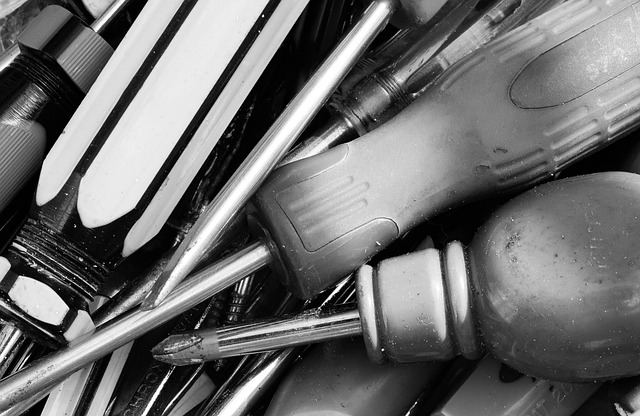DIYers face common pitfalls in home repair, such as misjudging complexity, incorrect tool choices, time underestimation, safety neglect, and poor planning. To avoid these mistakes, prioritize accurate assessments, safety, proper tools (e.g., screwdrivers, pliers, hammer), and thoughtful planning. A well-stocked toolbox empowers homeowners for minor repairs. For complex tasks beyond skill level, calling a handyman service is a wise decision, ensuring expertise, efficiency, and high-quality workmanship in home maintenance.
Tired of half-finished projects and frustrating DIY failures? Don’t worry, you’re not alone. This guide is your go-to resource for transforming those common home repair blunders into manageable fixes. We’ll show you how to identify and avoid the most pesky DIY mistakes, equip you with essential tools for quick solutions, and know when to call in professional help for more complex tasks. With these handyman tips, tackling home maintenance becomes a breeze.
- Identifying Common DIY Blunders
- Essential Tools for the Quick Fix
- Professional Help: When to Call a Handyman
Identifying Common DIY Blunders

Many DIY enthusiasts embark on home repair and maintenance projects with enthusiasm, but often stumble upon common blunders that can leave them feeling frustrated. From misjudging project complexity to using incorrect tools or materials, these mistakes can range from minor inconveniences to significant setbacks. One of the most frequent errors is underestimating the time required for a project, leading to rushed work and subpar results.
Additionally, ignoring safety precautions is another DIY failure trap. Without proper protective gear or understanding basic safety protocols, homeowners may risk injury or damage to their properties. Poor planning, such as not having the necessary tools or supplies on hand, can also hinder progress and cause delays. Identifying these blunders early on and being prepared with the right knowledge and resources can significantly enhance the DIY experience, ensuring better outcomes in home repair and maintenance endeavors.
Essential Tools for the Quick Fix

When tackling DIY projects around the house, having the right tools is half the battle won. For those quick fixes and emergency home repairs, a well-stocked toolbox can be a handyman’s best friend. Here are some essential tools that every homeowner should have on hand for seamless home repair and maintenance:
A versatile set of screwdrivers, including both flathead and Phillips varieties, is indispensable. Pliers come in various types; needle-nose pliers for precise work and adjustable pliers for a range of tasks are must-haves. A reliable hammer is a workhorse tool for nailing, demounting, and shaping materials. For cutting tasks, a utility knife or a compact saw can save the day, making quick work of wood, plastic, or fabric. Don’t forget about measuring tools like tape measures and rulers to ensure accurate cuts and installations. With these fundamental tools at your disposal, tackling minor home repairs becomes more manageable, allowing you to maintain and enhance your living space efficiently.
Professional Help: When to Call a Handyman

When tackling home repair and maintenance projects, it’s common for DIY enthusiasts to encounter challenges that their initial skills might not be equipped to handle. This is where professional help in the form of a handyman comes into play. Calling a handyman service isn’t a sign of weakness; rather, it demonstrates wisdom in recognizing the limits of one’s abilities and seeking expertise.
A handyman offers specialized knowledge and experience in various home repair tasks, ensuring that projects are completed efficiently and effectively. From simple fix-ups like leaky faucets or loose door handles to more complex issues such as electrical repairs or plumbing problems, handymen are equipped to handle a wide range of tasks. Their proficiency not only saves time but also guarantees high-quality workmanship, ensuring your home’s maintenance is in capable hands.
When DIY projects go awry, it’s essential to know your limits. While some home repair and maintenance tasks can be tackled independently, others may require the expertise of a professional handyman. By identifying common blunders early on and equipping yourself with the right tools, you can efficiently navigate many minor issues. However, for more complex problems, don’t hesitate to reach out to experienced hands – sometimes, it’s best to leave the fixing to the pros!
